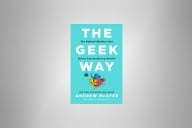You have /5 articles left.
Sign up for a free account or log in.
This conversation is with the author of the chapter “Toxic to Transformational: Women and the Higher Ed Ecosystem Post-Pandemic” in our new co-edited book, Recentering Learning: Complexity, Resilience and Adaptability in Higher Education (JHU Press, 2024). The book (in paper and ebook form) is available for order from JHU Press and Amazon.
Patrice Torcivia Prusko is the director of learning design, technology and media at the Teaching and Learning Lab at the Harvard Graduate School of Education.
Q: What main themes of your chapter would you like readers to take away and bring back to their institutions and organizations?
A: As I reflect on my chapter and the key themes, it takes me back to a time when I was sitting in an engineering classroom, one of only a few women and believing that progress had been made. I believed that things like pay equity and harassment in the workplace would not be my problems and I would walk into a room where, when I spoke, my voice was heard and a woman CEO would not be an anomaly. I did not think, in 2025, we would still be having these conversations.
In my chapter, I argue that the future of higher education requires a fundamental shift in leadership. True transformation is about moving beyond simply increasing the number of women in leadership roles. It’s about dismantling and redesigning the very structures that perpetuate inequality. It was as recently as the 1970s that we passed Title IX, Ivies became coed and a woman could independently have a credit card. In 2024, women earned $0.84 for every dollar earned by men, a change of only 4 cents in the last 20 years.
A feminist leadership approach moves us beyond checking boxes, holding workshops and cheering each time there is a percentage increase. Anyone can embody the values of a feminist leader, which prioritizes collective decision-making, collaboration, care, transparency, equity and the sharing of power. To do this work, one must understand the politics and culture within which one is working. In addition, critical self-reflection is core to this work so that you can understand how your own identities and lived experiences influence how you lead and the power you hold.
Ultimately, the goal is to step back, share power, empower those around you and use your influence to remove oppressive structures and shift us in the direction of a more just world. Actions each of us can take include championing others, amplifying the voice of others and noticing. Be observant, ask questions and really listen. Leadership sets the culture and climate of an organization. We are in complex, fluid, difficult times, and we need leaders who can build coalitions, be seen as solution partners and facilitate harmonious collaboration where people at all levels feel empowered. It can feel scary and overwhelming at times, but start small and think about your circle of influence. I like to use the analogy of driving on an icy road: When you slide, you are scared, and your reaction is to slam on the brakes, but in reality, you need to let go of your fear and drive into the slide.
Q: What are potential opportunities and levers to recenter learning within research-intensive colleges and universities?
A: In the chapter, I discuss making the argument for recentering learning in ways that center care, support and well-being while moving away from those things that have created toxic, unjust and oppressive systems. I see opportunities in thinking intentionally about leading change and getting buy-in. I find it helpful to know who the resistors are and take the time to listen and understand their point of view, as well as who the “evangelists” are. Specifically within a research-intensive college and university, I’ve been reflecting on a few “how might we …” wonderings:
- Reimagine promotion and tenure in ways that value care work, mentorship and inclusive teaching.
- Shift toward a leadership model that is relational, participatory and prioritizes well-being and collaboration.
- Redefine success and shift institutional values where learning is at the center.
- Let go of power and territory for the well-being of students, staff and faculty.
- Create and nourish a culture of inclusion.
This work requires us to have a futures thinking mindset, let go of assumptions we hold and allow ourselves to imagine our desired future.
Q: How might the rapid evolution of generative AI impact the work of recentering learning?
A: We’ve been dealing with innovation and the tech revolution for years. I believe we need to be very intentional around our approach to implementing generative AI as a way to recenter learning to ensure we don’t create further inequities. Generative AI alone won’t revolutionize education and recenter learning. I believe the integration of GenAI into educational experiences needs to be a collaboration with educators, developers, researchers, policymakers and our learners.
We must be intentional about how we approach design by involving all relevant parties (not working in silos), such as students and educators, early in the process, take the time to truly listen, make sure we are solving the right problem and we are adding value to the student and teacher experience. This involves focusing on the learner journey and understanding what the real pain points are and what they truly need and value. Our learners need to be solution partners in the process, with shared decision-making power. Taking a feminist leadership approach to this work would involve empowering learners as solution partners, centering their voices and sharing decision-making power.
As leaders in academic innovation, we must strive to ensure the platforms we use and create are just and equitable spaces where students from diverse backgrounds and lived experiences can come together, share experiences and learn from one another. We need to create those liminal spaces and curriculum that support learners in attaining the competencies and skills they need to be critical thinkers and global citizens.








